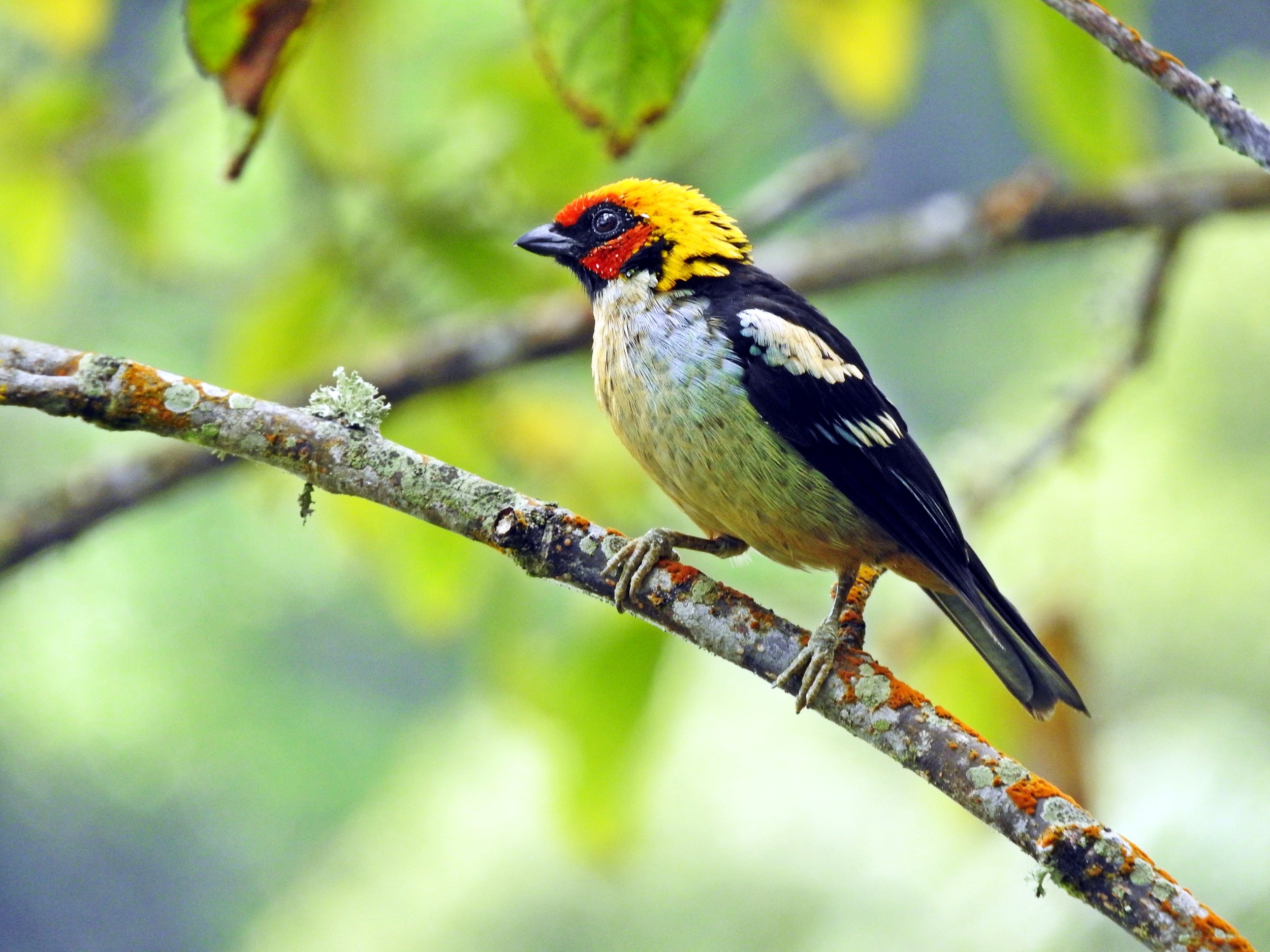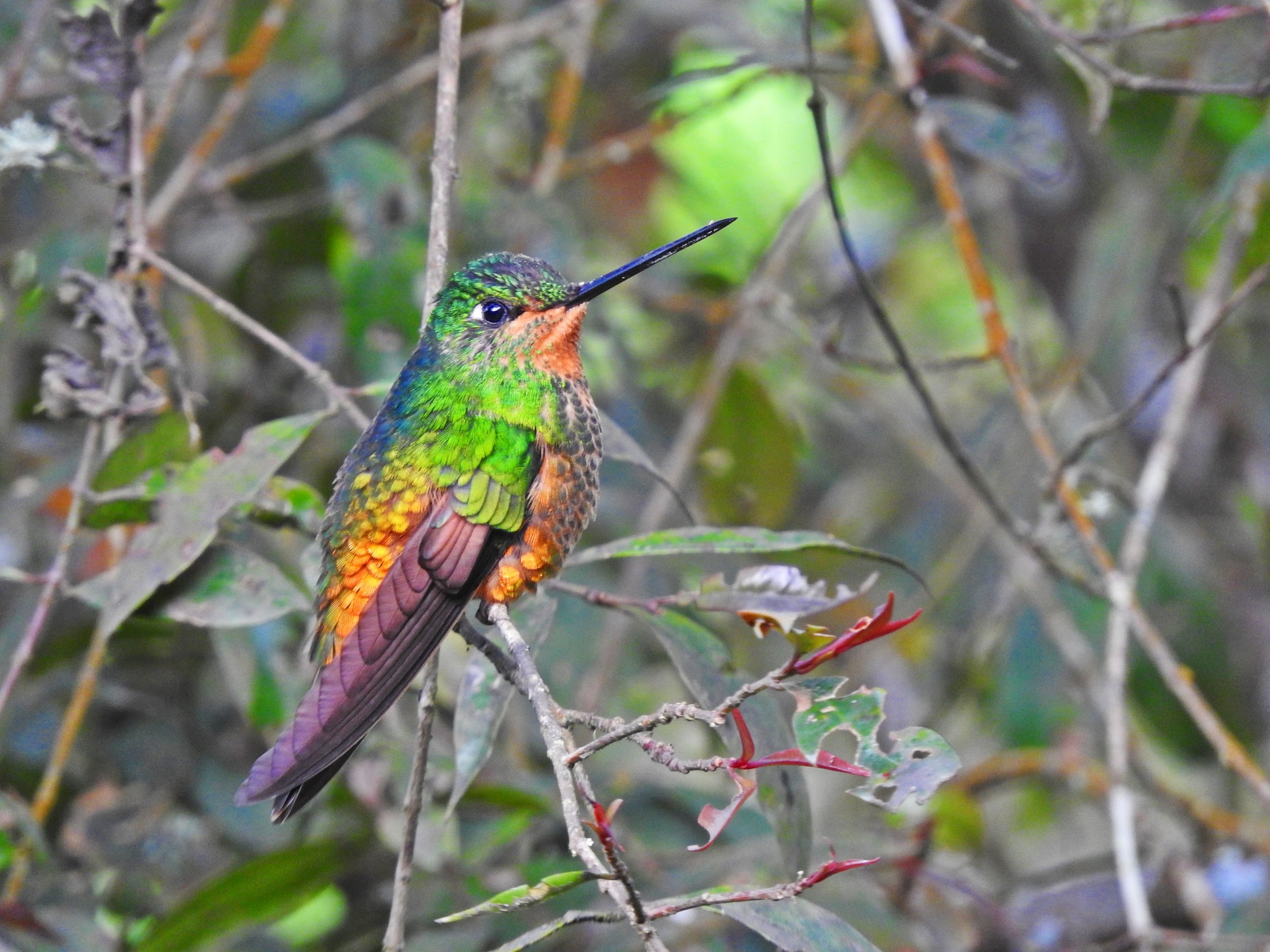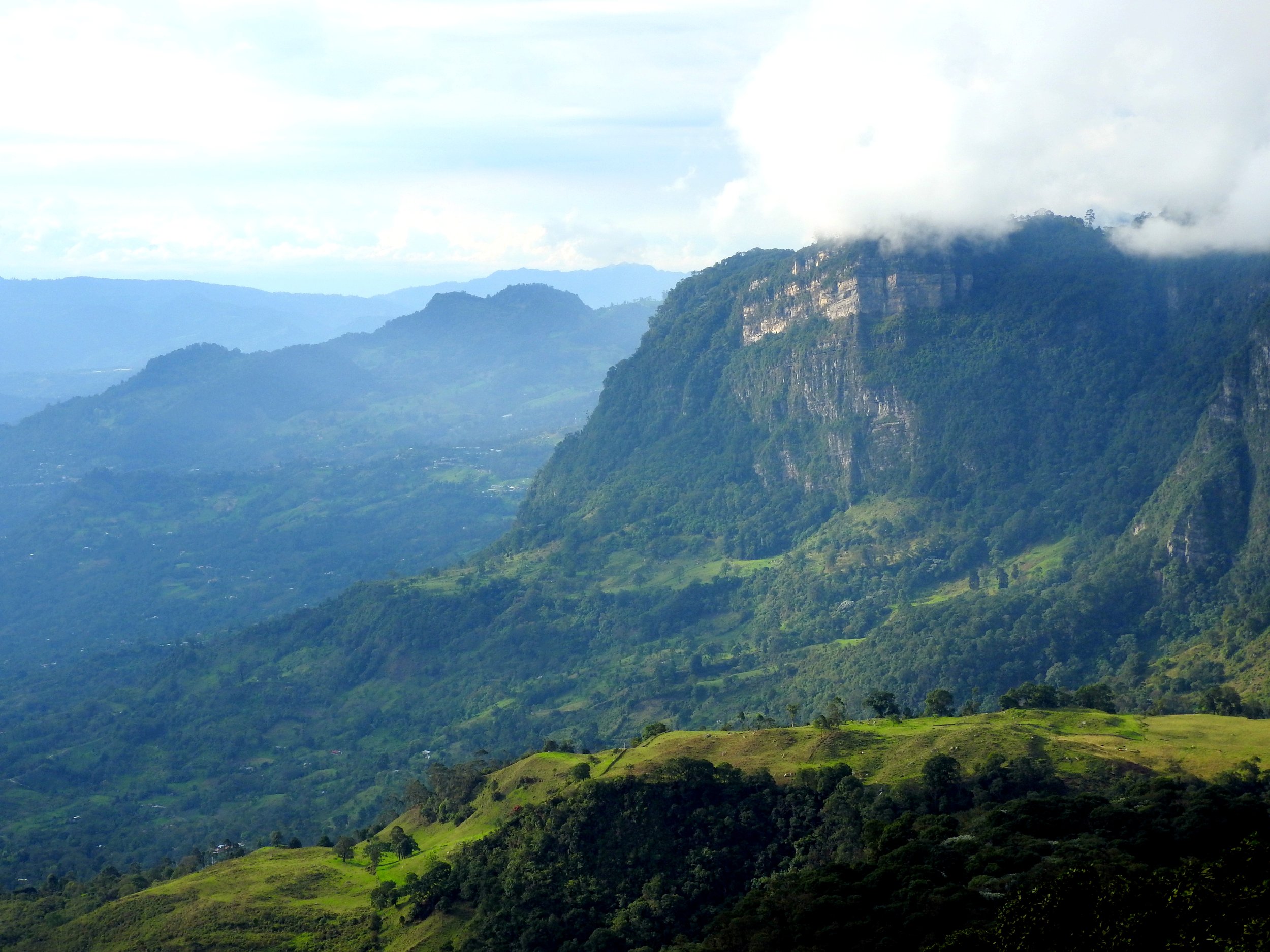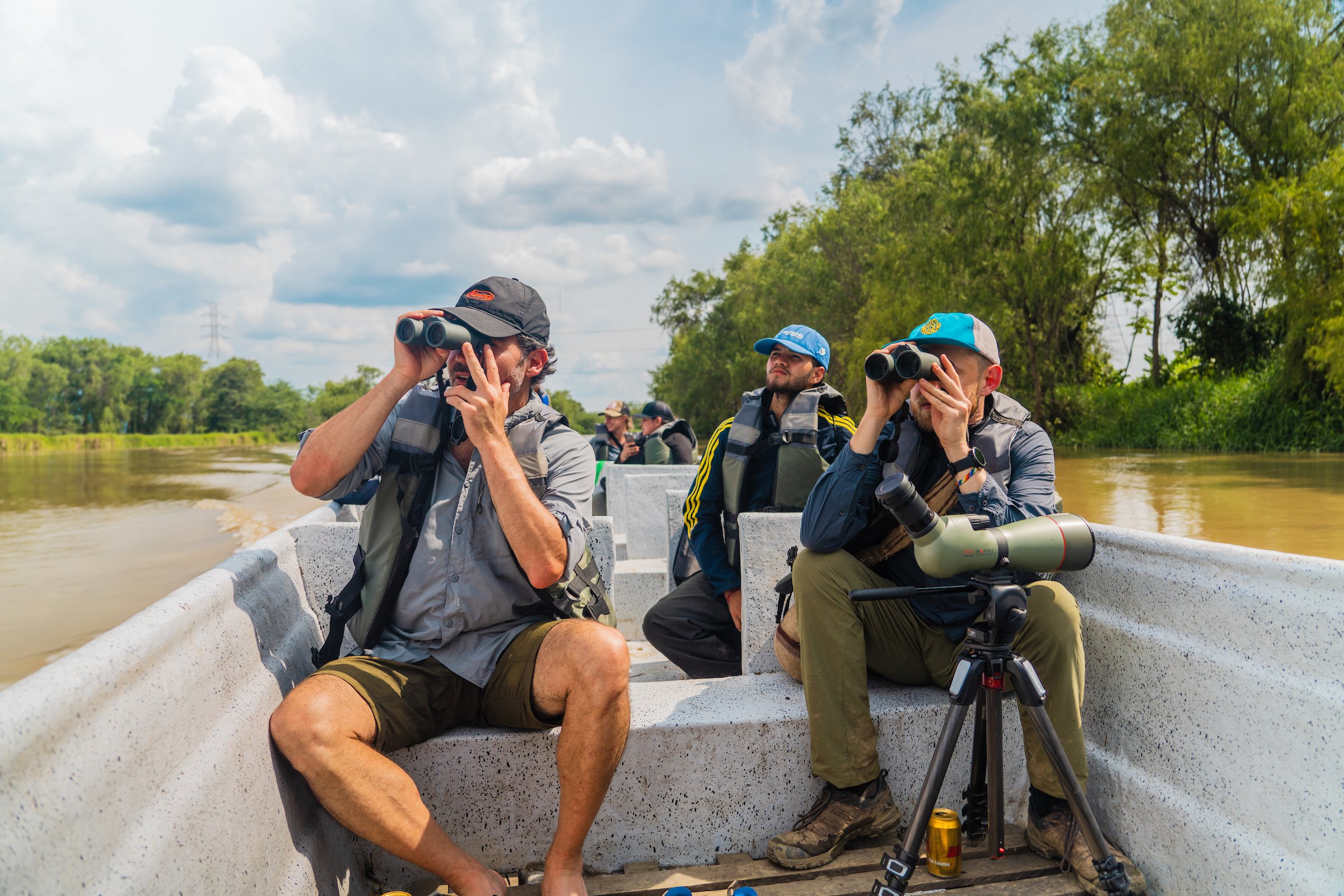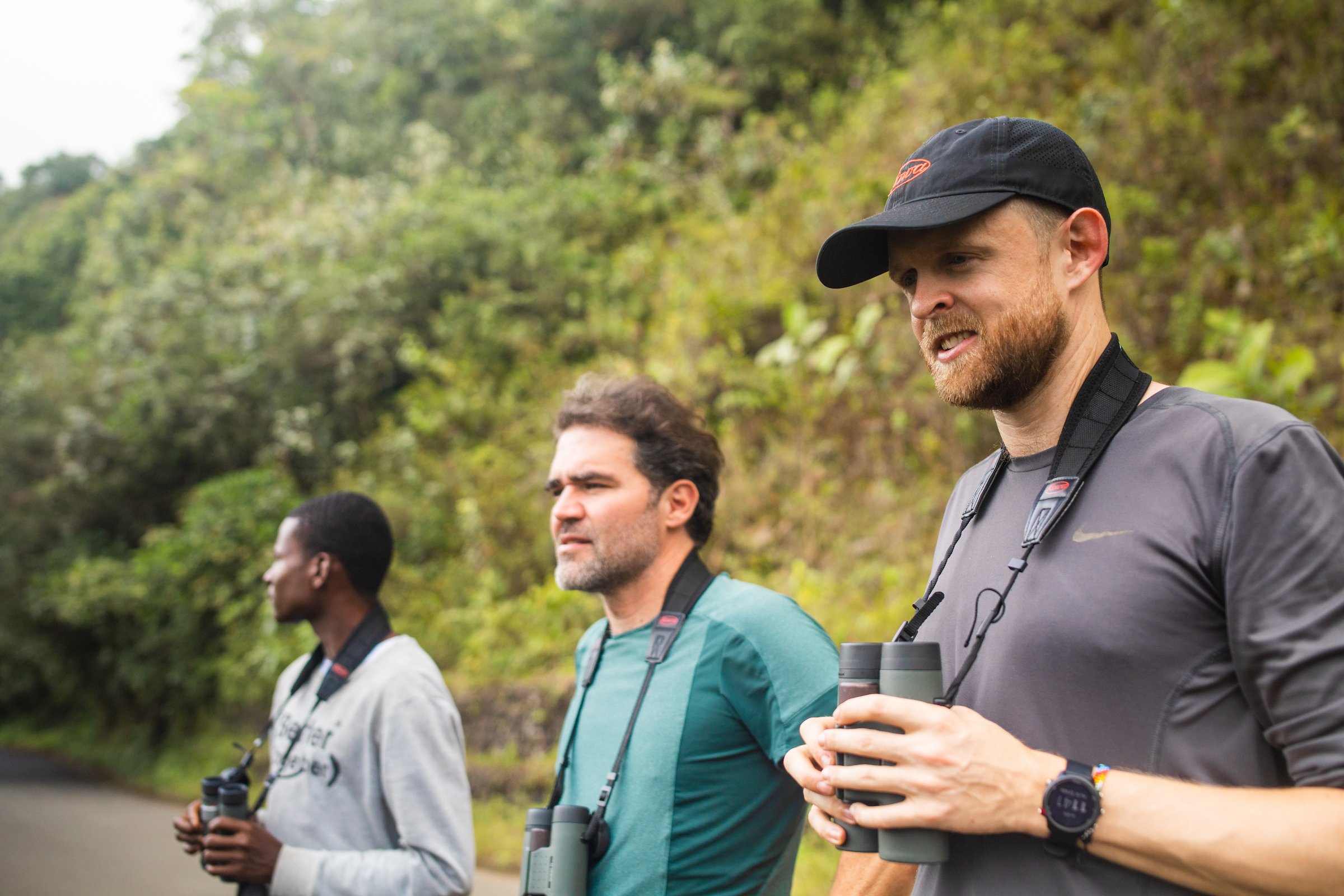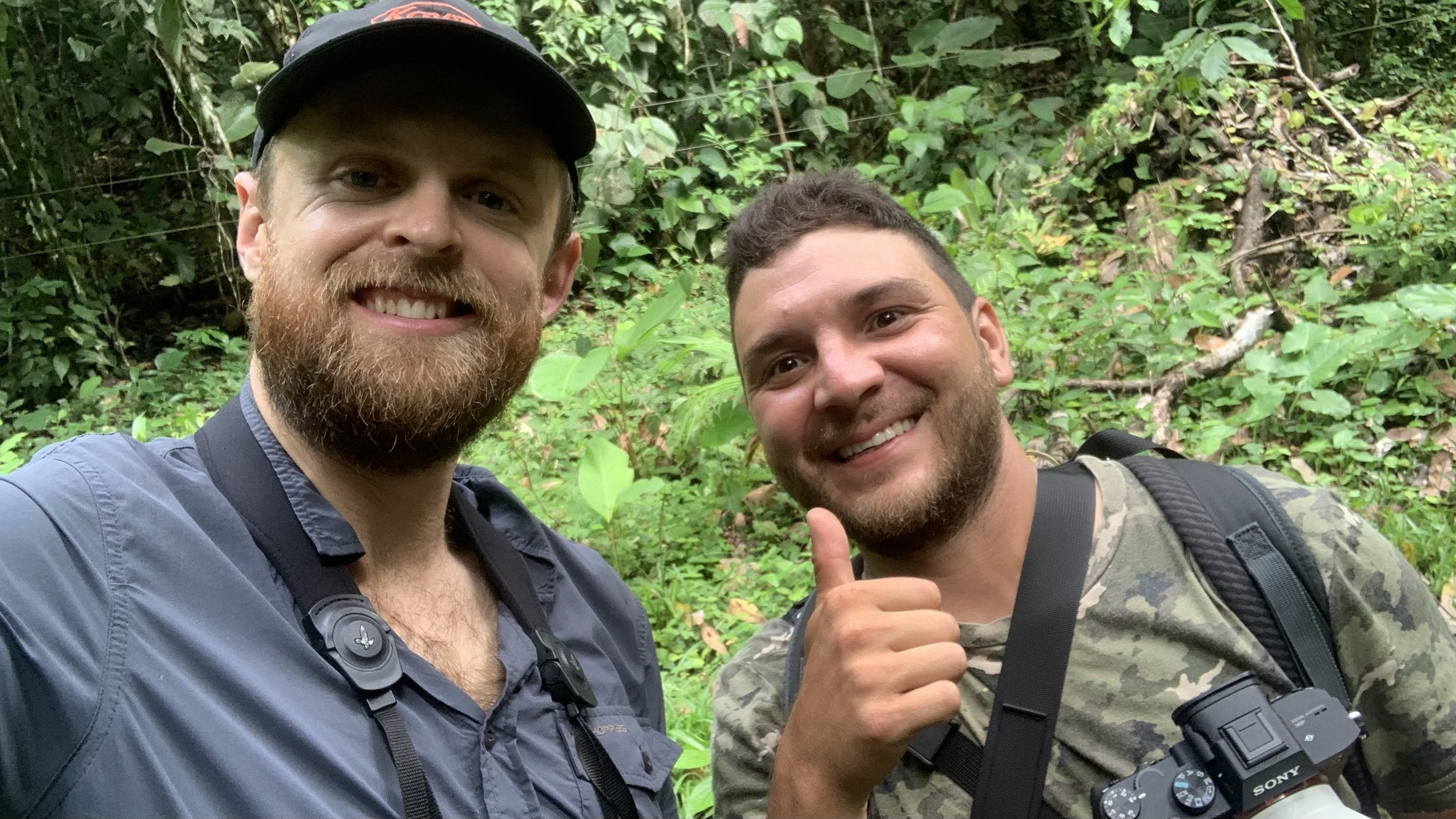Birding in Colombia: Chicaque Natural Park
Flame-faced Tanager
In this series for The Birders Show blog, Chris takes us to his favorite birding locations in Colombia. First up: Chicaque Natural Park near Bogotá.
Chicaque Natural Park is practically my local patch. It’s a small, well-preserved cloud forest park about an hour from the Colombian capital. It’s easy enough to visit for a day’s birding and has a range of comfortable accommodation options catering to most budgets. You can even camp there if you’re birding on a budget in Colombia.
Ask anyone I bird with in Colombia where I do most of my birding, and it’s a reasonably safe bet that they’ll say ‘Chicaque.’ Why? The proximity to Bogotá and ease of getting there on public transport means that I can easily slip away for a quiet day of birding without any prior planning, and it’s incredibly bird-diverse. It also throws up surprises from time to time, especially during migration season. For example, my only Colombian Golden-winged Warbler was spotted in Chicaque in 2017. I also once spotted a sloth along the main trail, although they are extremely hard to see in Chicaque.
A Hoffmann's Two-toed Sloth. These are very rarely spotted in Chicaque - I’ve only seen this one in 25+ visits
With the entrance sitting at 2,700 masl and the lowest reaches of the park just over 2,000 masl, Chicaque also boasts a nice altitudinal range, making for an interesting mix of species. The eBird hotspot for the park lists an impressive 474 species. However, there appear to be some erroneous reports on that list: it seems that some eBirders have amalgamated their lists from day trips, including the nearby Sumapaz National Park. That Green-bearded Helmetcrest that appears from 2017 wasn’t likely seen in Chicaque. The top eBirders for Chicaque have seen around 200 species; I’ve managed 145 so far. My average total for a full day of birding is usually between 50-60 species.
The birding at Chicaque begins right away. Once you pull off the main highway, it’s worth checking the small pools on your right for Spot-flanked Gallinule. The higher-altitude entrance road is also pretty birdy, with mixed flocks containing White-throated Tyrannulet, Buff-breasted Mountain-Tanager, Pearled Treerunner, and Slaty Brushfinch. I once had an Agile Tit-Tyrant in a bamboo patch along that road.
Spot-flanked Gallinule can sometimes be seen in the pools that form at the entrance to the park during rainy season
Upon entering the main park, it’s worth staking out the hummingbird feeders alongside the Arboloco Restaurant. The star attraction at these feeders is the Golden-bellied Starfrontlet, but you can also observe Tourmaline Sunangel, Sparkling and Lessers Violetears, and Collared Inca. White-bellied Woodstar is also an occasional visitor. Unfortunately, careless birders have been known to bird the entrance road and stop off at the feeders without paying any entrance fee or even buying a coffee: don’t be one of those people, at least drop a few dollars for a snack and a hot drink.
A female Golden-bellied Starfrontlet at the Chicaque hummingbird feeders
Once you pay your entrance fee (18.000 COP or US$4.50 // 15.500 COP or US$3.90 for 5-17-year-olds and over-65s // children under five are free), you can begin hiking down into the main park. The first paved section of road is good for species like Grass-green Tanager, Blue-and-black Tanager, and Crimson-mantled Woodpecker. Andean Pygmy-Owl can sometimes be heard there but is rarely seen, while the viewpoint is a good place for soaring raptors on sunny days; I’ve seen both White-tailed and Short-tailed Hawk from there. On a clear morning, you can even see the snowcapped peaks of the Central Colombian Andes!
There are over 20km of trails to hike in Chicaque, but for my money, the bird birding takes place along the main route down to the Refugio Lodge and then around the lodge itself. The higher sections of this trail are excellent for mixed flocks: a good one can contain at least a dozen species, including Black-capped, Oleaginous, Black-eared, and Superciliated Hemispingus; Common and Ashy-throated Chlorospingus; Beryl-spangled, Blue-capped, Metallic-green, and Blue-and-Black Tanagers; and furnarids like Montane Woodcreeper, Montane and Lineated Foliage-gleaners, Streaked Tuftedcheek, Streaked Xenops, and the more elusive Striped Treehunter. Southern Emerald Toucanets are also reasonably common along this road (listen out for their bill-rattling call).
Streaked Xenops is fairly common in mixed flocks at Chicaque
Some of the star mixed flock birds in this section of the trail include Plushcap and Brown-billed Scythebill. Plushcap is most often seen at bamboo, along with the diminutive Rufous-crowned Tody-Tyrant, while the scythebill seems to often bring up the rear in mixed flocks. Another top target for birders is the near-endemic Moustached Brushfinch. Despite its limited geographical range, it’s a pretty common bird at Chicaque - I don’t think I’ve ever failed to see that species while visiting.
The near-endemic Moustached Brushfinch is a big Chicaque target, and is usually quite easy to connect with
Listening is often as critical as watching in Chicaque; the forest is dense, and light is often low, so your ear is your friend. Birds that are heard regularly include Gray-breasted Wood-Wren, Whiskered Wren, Rufous Spinetail, Chestnut-capped Brushfinch, and Green-and-black Fruiteater. The three-note whistle of the Chestnut-crowned Antpitta is a constant companion, as is the call of the Blackish Tapaculo. Lined Quail-Dove is also heard quite often. The final three species are much more heard than seen, although the quail-dove and antpitta can sometimes be observed picking their way along the edges of the trail at dusk and dawn.
As you follow the road towards the Refugio, you eventually come to a signpost on your left for Pico del Aguila, another viewpoint. The trail towards the Pico is often very productive for mixed flocks containing all the species mentioned above. It seems especially good for Rufous-crowned Tody-Tyrant and Brown-billed Scythebill. Eventually, the path forks, and you have the option to continue to the Pico or double-back to the Refugio.
Brown-billed Scythebill can often be elusive, but is regularly seen perched low on tree trunks following mixed flocks
What you do here depends a lot on the weather and time - on a clear day, the view from the Pico is worth seeing, even though the birding seems slightly less productive. There are scattered reports of Brown Tinamou from that section of forest, but it’s highly erratic by the looks of it. I’ve seen Speckled Hummingbird feeding on the flowers around the Pico and mixed flocks there are good for Slate-throated Redstart and migrant warblers in season. If it’s getting late in the morning or a cloudy day, I would advise heading to the Refugio.
You will also see signs to the ‘Laguna.’ If you only have a day or two, I wouldn’t recommend this trail for birding. The lake itself doesn’t have many species (although I once recorded Chicaque’s first Whistling Heron on eBird there), and it’s a long hike there and back.
As you continue to the Refugio, you come to an open area known as La Grua. This is where you can take a 4x4 back up to the entrance to avoid a long, steep climb back (you can purchase tickets in the Refugio for about 15.000 COP // US$3.75, and it’s worth buying them the moment you arrive at the Refugio because the cars fill up fast).
The birding from the Grua to the Refugio is also excellent. Mixed flocks here often contain a different profile of species, and you’re more likely here to encounter Golden, Fawn-breasted, and Saffron-crowned Tanagers. Andean Solitaire is heard regularly here, and it’s an excellent area for warblers, including the resident Three-striped and migrant Canada, Blackburnian, and even occasionally Bay-breasted or Cerulean. Rufous-breasted Flycatcher - although regular throughout the park - seems commoner here, while the short section along the stream is excellent for Slaty-backed Chat-Tyrant. There’s a tall, bare tree between the Grua and the Refugio where a pair of Bat Falcon occasionally perch, and it’s worth scanning the cliff faces for flying Chestnut-collared Swifts.
Fawn-breasted Tanager is one of Chicaque’s many beautiful tanager species
When you arrive at the Refugio, head out onto the veranda for lunch or a coffee. This balcony area overlooks a section of forest canopy that is especially good for eye-level looks at a host of tanager species. Mixed tanager flocks here often contain Beryl-spangled, Blue-headed, Black-capped, and Blue-and-black Tanagers. In addition, the Fawn-breasted Tanagers nest in the eaves, and the stunning Flame-faced Tanager also nests nearby and is regularly seen foraging in front of the Refugio.
One of the other top targets for birders at Chicaque is the endemic Black Inca hummingbird. This used to be a much easier species to spot at the park. In the past, it fed on flowering bushes right alongside the steps up to the Refugio, but a few cats took up residence at the lodge and seem to have scared it off. So the best spot to try for the Inca now appears to be a yellow flowering bush to the left of the main building, just behind the laundry lines. If that bush is flowering, then stake it out for the Inca; if not, your best bet is keeping an eye on flowers between the Grua and the Refugio or along the waterfall trail.
The endemic Black Inca is probably Chicaque’s star bird. Sadly, it’s not as easy to see there as it once was
You can have lunch at the Refugio (the menus range from simple typical dishes to fancier fare like steak and trout. I heartily recommend the chicken or vegetarian wraps for something cheap and filling). It’s worth birding a short section of the road that slopes down behind the Refugio: there’s a territory of Rufous-tailed Tyrant down there, and I’ve had good looks at Strong-billed Woodcreeper along that section.
What you do next depends a bit on your timings: if you’re planning to stay overnight, then it’s worth birding the trail to the waterfall. This section is the only place in the park I’ve seen Plain Antvireo, and Green-fronted Lancebill can often be seen hawking for insects right below the waterfall. It’s also a beautiful walk in its own right, with lovely open views over the forest canopy.
If you aren’t staying over, then the hike to the waterfall and back might be a bit of a rush. It’s perhaps better to leisurely bird the Refugio and the trail back to La Grua, working on mixed flocks. I recommend taking the 4x4 back up to the entrance for first-time visitors: the hike is strenuous, and birding on steep uphill walks is often less productive as you focus on the effort and not on scanning the canopy. Better to focus your efforts on the lower section of the park than be rushing to hike back up before the park closes at 5 pm.
Suppose you plan to stay overnight (you can see a complete list of accommodation options and prices here). In that case, you can afford to take your time and bird the waterfall trail since you’ll be able to bird the lower sections of the park in the early morning the following day. It’s worth doing a bit of nocturnal birding as well: White-throated Screech-Owl and Tropical Screech-Owl are common around the Refugio, and I once had Rufous-banded Owl there too. A family of Gray-handed Night-Monkeys also frequent the trail between the Grua and the Refugio. Look for them soon after dusk.
This blog is by no means an exhaustive account of all the birds you can see at Chicaque; it’s just based on my observations from many, many visits! For first-time visitors, as with anywhere in Colombia, I would strongly recommend visiting with a local guide to maximize your birding experience and give back to the local birding and ecotourism community. Many local Bogota agencies offer birding day trips to Chicaque, and it’s often included on longer birding itineraries for the starfrontlet and Moustached Brushfinch.
For anyone looking for a rewarding day of birding, with lots of species, just a stone’s throw from Bogota, then I couldn’t recommend Chicaque highly enough. There’s a reason it’s my local patch, after all!

